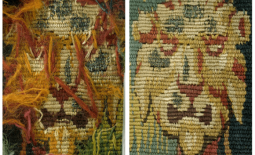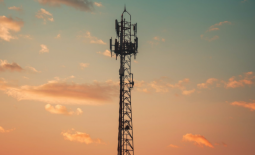Bally High
I’ve really been enjoying the new show on the Discovery channel, “Pitchmen” in which each episode follows the successful (and sometimes not-so successful) course of one or two “as seen on tv” products. Legendary hucksters Billy Mays and Anthony Sullivan guide the inventors through the surprisingly interestingly (but sometimes murky) waters of direct response advertising. Think of them as part PT Barnum and part Sacajawea (good article from CNN Money on these guys.)
In the latest episode, the Pitchmen take a potential next-gen “Billy Mays 2.0” under their wing and show him some of the basics in the art of pitching products to the public. A technique the guys referred to as “ballying” latched on to my brain, and I thought I share a few thoughts on the concept here.
I found a really good explanation of the word and the entire Bally process by searching for “carny terms” and discovering this site: http://www.goodmagic.com/carny/index.htm. A quick search through the listings for “B” and I had more Bally info than I could have imagined.
The “Bally” is the spiel designed to draw a crowd (called a “tip”) to see a sideshow. The bally is essentially a commercial which typically features quick appearances by the performers in the show. It is a shortened version of the word “Ballyhoo” which came to mean “to attract the attention of customers by raising a clamor.” The word originated at the 1893 Columbian Exposition in Chicago.
This old/new word seems to embody the principles needed to attract clients into our dot-com tents from the new media carnival midway.
There is a lot of information on the GoodMagic.com website, and even though this post is pretty long, this is an edited version of what you can find on their site.
Here are the steps to a successful bally:
MAKING THE OPENING/BUILDING THE TIP
“Making the opening” is attracting the attention of everyone within earshot. The object is to assemble a crowd. They don’t have to be eager attendees, they just have to be willing to pause for a moment to find out what you are yelling about.
The word “free” is particularly attractive. The crowd is being separated from their money at every point along the way from the gate to the “back end” where the biggest sideshows are usually placed. Anything they can get free is a real relief (they don’t quite catch on that the whole idea is to take even more of their cash).
To keep the crowd once you have their attention, build anticipation — something very interesting is going to happen and it’s just about to be revealed!
The bally should only last five or six minutes, with six to ten repetitions per hour. The goal is to project intense energy and to sense and respond to the crowd’s mood.
FREEZING THE TIP
You’ve assembled a gaggle of freeloaders, but they’re not a “tip” until they’re paying close and continued attention. “Freezing the tip” is getting them almost immobilized. Get them to move closer to see better, making it difficult for anyone to leave because of the tightly-packed crowd.
A few successfully mesmerized people will attract a larger crowd (“What are all those people looking at? Let’s go check it out!”) You must keep them amused so they don’t drift away.
You might also use a “stick” (a shill) to subtly herd the tip people into a tightly-packed bunch so that it becomes difficult for anyone to fight their way out of the tip (much easier to stay and see the interesting stuff.) Add a “draw” — a little business, a gag, some bull — designed to draw the tip inexorably close to the bally platform.
To entertain is not the purpose of the bally. It is to stop people so you can sell the contents of the show. The entertainment is on the inside.
THE PITCH
Now you have a “tip,” and it’s time to give them “the pitch,” the part where you describe in glowing hyperbole the glories to be seen inside. You might want to introduce a “hook”, a promise of something that is just about to happen or a feature you must not miss. Refresh the hook from time to time by referring to it or elaborating on it.
Use your authority (people are used to following the instructions of someone louder and higher than they are.) Then pitch what you’ve got inside, describe the excitement they’ll experience, the rare opportunity to see something thrilling. Talkers became experts at painting word pictures. A good talker could at implant the idea that this experience would be “interactive” and personally involving. Use superlatives and florid language, but use it in a calculated way and refine it with practice or it will sound foolish. The bally is both practiced and improvisational. Reading the crowd and reacting to them is an art.
TURNING THE TIP and THE JAM
The turn is the point at which the sales pitch becomes a call to action. The term probably comes from turning a herd of cattle, and what human cow could resist a bargain? For that matter, who could get out of the assembled, tightly-packed tip once the crowd started moving to the ticket booth and the entrance?
This begins the ‘jam’ and the momentum is kept up by a ‘grind.’ The jam is the ratcheting up of the call to action by introducing a sense of urgency. (“Just three minutes left to buy admission at the sale price? Gosh, I hope I can get up there in time!”) Of course, no one is ever too late, but they think they might be. Think of a modern-day television commercial: “Call in the next 10 minutes and we’ll also include a second bottle free!”
THE BLOWOFF
After you have them inside, fairly captive, and have shown them the best you have, you have a chance to make your real money. Throughout the show, the giant has been selling huge rings, the Mule-Faced Girl and the Lizard-Skinned Man have been selling cards with their photo and bio, etc. Now it’s time for a final “surprise” sales pitch. After you’ve delivered all you promised, the star attraction or the inside talker would always give the people a chance to see something really special — for an extra charge.
Perhaps the additional attraction would be the chance to come up on stage and look down into the Blade Box, perhaps it would be the chance to see a part of the tattooed lady’s anatomy that might not be appropriate for the whole family. Or the talker could suddenly slow the rapid-fire parade of claims to draw attention by contrast of pace — tell a story, and aim the appeal seemingly straight at the emotions.
…which is usually the best connection to the wallet.


